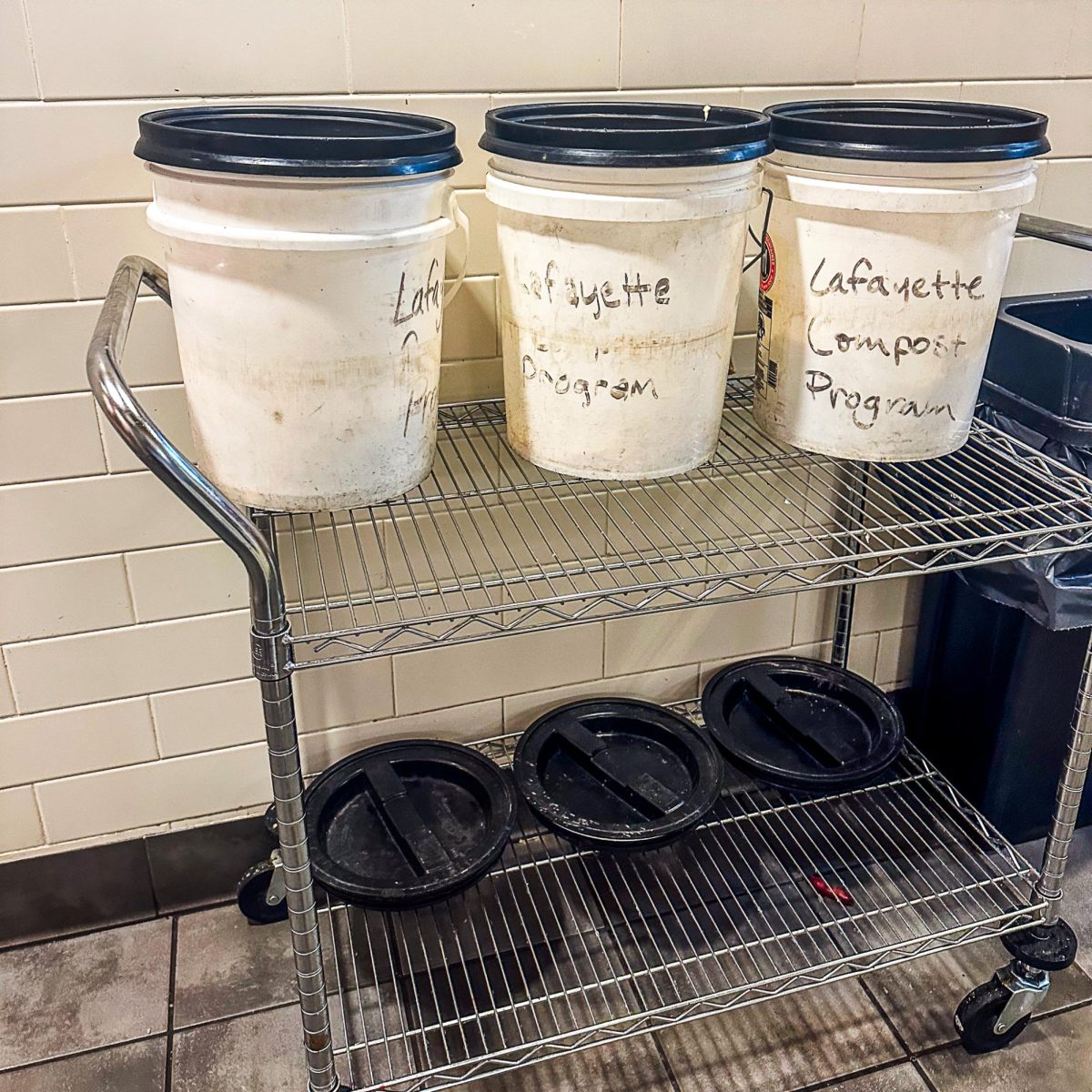Composting returned to campus at the beginning of the fall semester after a three-year hiatus, aiming to promote waste diversion and sustainable practices. Almost one year later, how did the program do?
According to members of the Office of Sustainability, the revitalized program aimed to take food waste from dining halls, food retail locations and Greek life houses to create compost for LaFarm. However, last fall, none of the compost created was able to be used for fertilization due to complications in creating a proper composting ratio between different types of compost. As a result, none of the compost created has been used for fertilization.
“They used wood chips, and the wood chips wouldn’t degrade fast enough, so the compost wasn’t that good,” said Vincent de Lhery, the temporary compost manager. Melissa Adamson, climate action and circulator manager, directed the program until leaving for maternity leave in March. Adamson could not be reached for comment. It is currently unknown why wood chips were selected to be added to the compost.
“It took them some time to get it working,” said Josh Parr, the manager of food and farm at LaFarm. “It wasn’t really producing compost, it wasn’t really breaking things down.”
According to Director of Sustainability Delicia Nahman, batches that were not fit to be used as compost were repurposed on LaFarm.
“The early batches were taken to the farm where they further decomposed,” Nahman wrote in an email. “Since they were wood chip heavy, they were used on the farm as wood mulch (foot paths, for example).”
“Everybody on the team kind of figured that that compost was being used for fertilization,” Clara Witmer ’27, a composting intern, said about a lack of communication regarding the fate of the compost with student employees.
In the spring semester, the type of wood chip was switched to a specific mulch.
“I would say a couple of weeks ago, we finally got a good system figured out in terms of the ratio of the leaves and that sort of thing,” Parr said. “It has to sit and cure for a little while before we put it directly on the fields.”
The reimplementation of the composting program included the purchase of new machinery, a vessel that “looks like a cargo van,” de Llhery said.
“Mix it all up and, once a month, we have grounds people pick up the mulch to compost and bring it over to the farm,” he continued.
The composting program is part of the college’s long-term sustainability goals. The college aims to have 60 percent of waste diverted away from the landfill by 2035, according to the Office of Sustainability website. Currently, 20 percent of all waste is diverted.
“We pick up between 1,100 to 1,300 pounds of scrap material,” de Lhery said. “We’re making about a ton every week of compost.”
Despite setbacks, representatives from the Office of Sustainability maintain that the program has had its share of accomplishments.
“I think that a success is that we were able to expand the number of student jobs on our compost team to allow more students who are interested in this work to participate in it,” Nahman said.
“The students run it,” de Lhery added.
According to Parr, LaFarm plans to start utilizing the compost in planting in around a month.
Clara Witmer ’27, who is acting as assistant news editor, did not contribute writing or reporting.




































































































